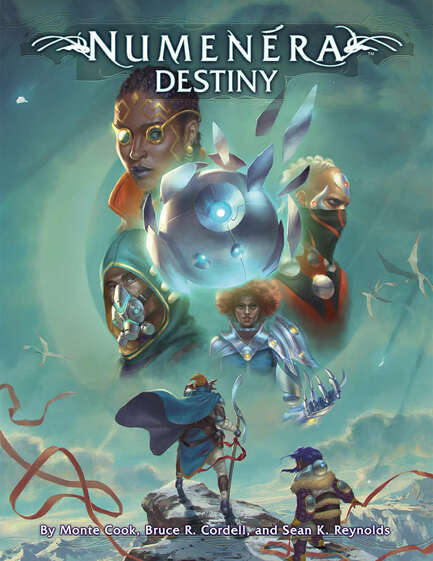There
was a glorious coastal city during the High Age of humanity, where the people
lived lives of luxury and magic, trading in peace with their elven neighbors in
the forest and dwarven neighbors upon and within the mountain, and with long
forgotten peoples across the ocean. A few magnificent albeit dysfunctional wonders
from that era remain, but for the most part, the formerly great city dwindled to
little more than a small, isolated village, far removed from what remains of
the kingdom. Anyway, this was the case for Howl’s Village up until six months
ago. Now it is known as Howlston (Howl’s Town).
A
little over six months ago, a new wave of Aquarian colonists arrived from the
ocean, the first to arrive to this region, and they settled along the sparsely populated
coast. The Aquarians, for reasons left unspecified, wish to colonize the
interior of Mt. Laputa. They brought massive pearls of various colors and qualities,
cultivated deep in the ocean, a casual display of wealth beyond the coffers of
the kingdom itself, and more arrive from their amphibious caravan regularly.
They have offered to pay, in pearls and other resources, any who would help
them colonize the mountain.
As a
result, a cottage industry for warriors, diplomats, cartographers, miners, loggers,
and other adventurers has formed within the village. The warlords and their
gangs were the first to arrive, quickly establishing themselves as the “Kind
Companies”, ostensibly legitimate businesses bringing food and materials, and then
developing the land and effectively co-opting the town, to accommodate the
influx of workers. Then came the fey, led by the greedy and opportunistic leprechauns,
but along with them goblin engineers, hob enforcers, pixie scouts, and all
sorts of others. Over time, as demand for competent workers grew, there came
the first large-scale call for espers in well over a century.
In
regard to the development of the Aquarian colonization project, the
complications are as such. To reach Mt. Laputa, one must cross Mononoke Forest.
The forest is dense, full of disease-carrying bugs, toxic plants, dangerous
beasts and monsters, and the elves. The only way the Aquarians will be able to
colonize Mt. Laputa is if a road can be carved through the forest. Road-building
logistics aside, there are also the elven prides. The two major elven prides of
Mononoke Forest are the Raging August Leopards and the Righteous Angry Lemurs.
They have been in conflict, on and off, for as long as can be remembered. The
Leopards are a warrior pride of fierce grendel elves, who may be convinced to
allow the development of the road, particularly if they are given assistance
against the Lemurs. The lemurs have fallen under the leadership of lamia elves,
who came from the ocean with the Aquarians, claiming to be refugees forced from
their homes by the Aquarian caravan. They can be appeased, but they will under
no circumstances allow the development of the road or in any other way directly
assist the Aquarians. Additionally, although less fierce in direct combat,
their traps and guerrilla tactics make them a greater nuisance to the
development of the road.
Even
without a road, negotiations have been initiated with both the dwarves atop Mt.
Laputa, as well as the duergar (dark dwarves) within the mountain. The Aquarians
claim that their development plans for the interior of Mt. Laputa can
accommodate both communities, but the mountain dwarves are skeptical, and the duergar
can barely be reasoned with at all and are generally hostile to all except the
mountain dwarves (who they don’t particularly like but will at least
communicate with). While even the mountain dwarves are alien in demeanor to
humans, they do seem to at least have an
instinctive fascination with the pearls and have already learned to use them as
magical conductors and carve them into hard and light-weight arms, armors, and
other objects that they have seemingly no practical use for. They enjoy the
process, and their wares rival those of the fey, and come comparatively cheap
(albeit more difficult to obtain, for obvious reasons).
As the Aquarian colonization project, led
primarily by humans, continues to progress, Howlston finds itself in dire
straits. At first the villagers celebrated their new guests, basking in a seeming
return to glory for this ancient and once great place. However, the town’s food
and other resources are overstretched, and the Captains of the Kind Companies
have subtly (and sometimes not so subtly) taken control of the town and squeeze
the townspeople for all they’re worth. Additionally, the town has become
overcrowded, and overrun with theft and violent crime. On the bright side, some
of the ancient wonders, buildings and artifacts, have been restored by means of
the magically-conductive pearls, or good old-fashioned engineering, and new
“wonders” are constantly being built.
The
PCs, presumably espers or people with great skills of other kinds, were brought
to Howlston, having been hired by Captain Patrick Russo and his small-time Kind
Company. His company specializes in intelligence; surveying the region,
investigating rumors, and using proprietary methods to make predictions about
the state of the Aquarian colonization project or local developments on behalf
of clients or for sale to the highest bidder, and so he needs parties of
capable individuals who are up for any task.
